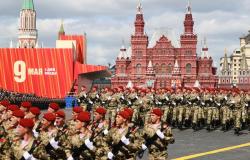The beginnings of the war in Ukraine were marked by many “hiccups” on the Russian side. The problem was not so much the absence of means as their poor exploitation, Note Business Insider: ISR drones like the Orlan-10 and Pulls were used, but in insufficient number. Too rigid command systems considerably slowed down the responsiveness of the troops. Disorganization was such that many soldiers were unaware of the existence or functioning of the Strelet system, supposed to provide real -time mapping of enemy positions.
The delay between the identification of a target and the shot was too long (several hours for cruising missiles), allowing the target to run away. Researchers from the Royal United Services Institute (RUSI), based in London, indicated in November 2022 that the Russian forces “Missing targets due to internal friction in their destruction chains, generally hitting too late rather than not at all”. Clearly, the Russian army, equipped with aging equipment and heir to a heavy Hierarchical Soviet pyramid system, was “Nickname”.
Russian defense introspection
But this era seems to be over. Three years of fighting have transformed the “destruction chain” of Moscow – the process of detection to the engagement of the target – making it faster, more fluid and much more dangerous. An evolution that NATO looks at with a worried eye.
Jack Watling and Nick Reynolds, Rusi researchers, wrote in 2023 that “Russian artillery has started to considerably refine its typing and recognition complex” After seeing his stocks of ammunition and command centers devastated by the Ukrainian Himar strikes.
Russia has multiplied its production of tactical drones, flooding the battlefield of hundreds of flying spies: in 2023, the Russian state agency TASS thus reported that the supply of drones Orlan had been multiplied by more than 50. Russian squadrons now obtain in real time several angles of observation of the same target, strengthening the precision of fire.
-Enjoying a better vision of the battlefield thanks to drones, Russia is increasingly using short-range ballistic missiles such as ISKANDER-M and devastating planing bombs to precisely reach high-value targets at the Ukrainian back.
This technological revolution was coupled with an organizational reform: direct integration of drones into field units today allows much better synchronization between information and fire capacity. The use of stlets has become widespread, as is the use of civil tools – smartphones, satellite terminals – facilitating the communication and consolidation of tactical data.
A structural threat to NATO
This modernization of the Russian military system requires NATO an urgent questioning of its own doctrines. “Since 2022, NATO has focused more on the fractionation of forces”confirms to Business Insider Federico Borsari, researcher at the Center for European Policy Analysis. But much remains to be done.
To counter Moscow, the West also intends to put pressure on the supply of arms of the federation. Thus, the production of Russian drones is still largely based on foreign components, especially electronic. A strengthening of sanctions and better control of exports could slow the rate of modernization of Moscow.
But the training, equipment and tactical patterns of NATO must still evolve to face an opponent who, despite many disappointments, has learned from his failures.








